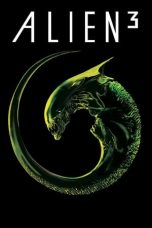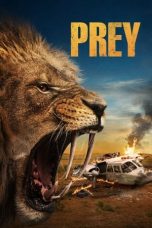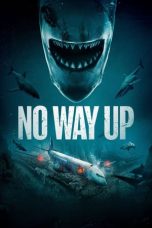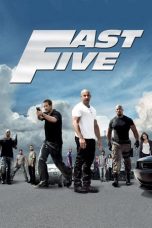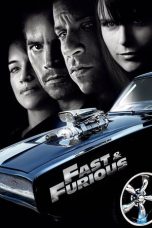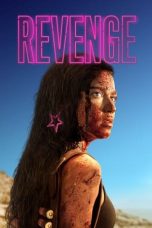- Source: Crash (magazine)
- Source: Crash Magazine
Crash, stylized as CRASH, is a magazine dedicated to the ZX Spectrum home computer, primarily focused on games. It was published from 1984 to 1991 by Newsfield Publications Ltd until their liquidation, and then until 1992 by Europress. It was relaunched as a quarterly A5 magazine in December 2020 with the backing of the original founders.
The magazine was launched to cater for the booming Spectrum games market. It was immediately popular owing to its quality of writing and distinctive, though occasionally controversial, artwork created by Oliver Frey. By 1986 it had become the biggest-selling British computer magazine with over 100,000 copies sold monthly, but struggled towards the end of the decade after other magazines put cassettes of games on the front cover. In the 2010s, a number of retrospective issues were created via a kickstarter campaign leading to the new publication by Fusion Retro.
History
Crash was launched in 1983 in Ludlow, Shropshire by Roger Kean, Oliver Frey and Franco Frey. The trio had met the previous year when they were working for newspaper publisher Alan Purnell, learning how to write and produce a magazine from scratch. Franco Frey had worked for an electronics company, and had been asked by one of his business contacts if could get hold of video games. Kean remembers that "The High Street was ignorant of computer games" and they wanted to source titles and sell them. They set up a mail order catalogue called Crash Micro Games Action and advertised in contemporary computer magazines such as Computer and Video Games. It was immediately successful, so by late 1983, they decided to launch a dedicated magazine, forming the company Newsfield to do so. Kean and Oliver Frey wanted a catchy title for the magazine, choosing "Crash" after J. G. Ballard's novel of the same name.
Though he had regularly played video games throughout the 1970s, the middle-aged Kean realised that the target market for the magazine was teenagers and young men, and the writing needed to accommodate this. Consequently, he hired teenage staff writer Matthew Uffindel and the pair recruited local schoolchildren to review the games, including Ben Stone and Robin Candy. To produce screenshots, a camera was set up to directly capture the television set or monitor that the Spectrum was plugged into. The film was then processed in-house, printed and delivered to a local print shop to prepare the final page.
The first issue was intended to be published in November 1983, in time for the pre-Christmas trade, but owing to a conflict with retailers WH Smith it was published in February the following year. The magazine maintained focus squarely on Spectrum gaming. It was an instant hit thanks to Oliver Frey's artwork and Kean's writing, assisted by Uffindel. Kean and the Frey brothers would continue to be involved with the magazine throughout its lifetime.
Reviewers would give their direct opinions on whether a game was good or not, regardless of advertising or any pressure from software houses. Though publishers sometimes tried to bribe the magazine editors to give games good reviews, the children would not do that, and once gave a game a low score of 9%. This honesty gave Crash a good reputation and made it highly influential in the games industry. If a game was awarded a "Crash Smash" (an overall rating of 90% or above), the industry believed it was genuinely good and it would sell well. The logo was used in advertisements for games, big and small. Notable Crash Smashes included Jet Set Willy, Sabre Wulf and Head over Heels. In 1986, Gremlin Graphics published a compilation, Four Crash Smashes, which featured Spy Hunter, Alien 8, Dun Darach and Night Gunner.
In October 1986, Crash reported sales of over 100,000 copies. Its ABC figure of 101,483 copies a month for the period of January to June were claimed by the magazine to be higher than any other British computer magazine.
By 1989, rival Spectrum magazine Your Sinclair regularly came with a free cassette attached to the cover that contained a complete game and various demos. Crash had occasionally featured cassettes on the cover, but began to lag in circulation. It was relaunched that June with a free cover-mounted cassette with a number of complete games, which continued as a regular feature. This came at the expense of page count and editorial content, both of which were reduced. Kean was annoyed by having to put tapes on the cover to keep up with the competition, as it increased costs and obscured Frey's cover artwork.
Newsfield was suffering increasing financial difficulties by the early 1990s. The last edition of Crash published by the company was in September 1991. Following the company's liquidation, the magazine was relaunched by Europress that December, continuing until the final issue in April 1992. After this, Crash was bought by EMAP, publisher of Sinclair User, who merged the two magazines. In practice, this meant little more than the appearance of the Crash logo on the front cover.
In May 2016, No. 2 King Street, Ludlow was awarded a Blue plaque as the premises of Newsfield while it was publishing Crash and ZZap!64 from 1984–9, which both hired pupils from Ludlow Church of England School alongside professional journalists.
In 2017, the magazine was commemorated in a special exhibition in Ludlow Buttercross Museum documenting Newsfield's contribution to the local industry. The same year, a special edition of the magazine was issued following a Kickstarter campaign that raised £12,000. Kean, Oliver Frey and Nick Roberts all returned to contribute to this issue. The following year, a similar campaign led to the 2019 Crash annual – issue 100. The magazine was relaunched as an A5 quarterly publication in December 2020.
Cover art
Crash featured distinctive cover art, mostly drawn by Oliver Frey. Much of his work was published in book form for the first time in 2006.
The cover of issue 18, July 1985, which depicted a scantily clad sorceress with a man on his knees in collar and chains, was considered provocative by some shops who moved it to the top shelf. Issue 31 in August 1986 was criticised for the front cover featuring staff writer Hannah Smith in a swimsuit mud wrestling with an alien. The cover of issue 41, June 1987, was a particularly violent image depicting two barbarians fighting, with one about to slit the throat of another. The picture was deemed too strong by W H Smith and that issue was relegated to the top shelves. However, these controversial covers helped boost the sales of Crash, particularly doubling the circulation from 1985 to 1986.
Editorial content
Much editorial content (such as previews and responses to readers' letters) was credited to Lloyd Mangram, a fictional character, although written by members of the editorial staff. He was created by the team simply to make the magazine look more important and professional by appearing to have a greater number of writers, and named after golfer Lloyd Mangrum. On one occasion, Mangram was depicted visually in the magazine by a sketch of a man wearing a paper bag over his head with holes cut for eyes, and was reported to work on a Hermes typewriter.
The "Playing Tips" section featured solutions to games cheats to make them easier. Candy was a regular host of this section in its early years. Issue 27 in April 1986 included a special "Robin Candy's Playing Tips" supplement of cheats and game modifications, including a room editor for the Crash Smash game Sweevo's World. Following Candy's departure, Hannah Smith ran the section as a self-styled "girlie tipster", establishing a rivalry with fictional Melissa Ravenflame from Computer and Video Games. Nick Roberts began his role in the magazine editing this section after Smith, and stayed for the remainder of its run, working out POKEs (alterations to the game's machine code in memory that allowed a player to cheat) using a Multiface, a Spectrum hardware add-on. The magazine also covered technical information and stories about future hardware and peripherals in its "Tech Niche" and "Tech Tips" sections, the latter frequently written by Simon N Goodwin. In 1988, a special "Tech Tape" was released, containing utilities and programs associated with this section.
Crash included the occasional column which seemed unusual for a computer magazine. Its first year saw the launch of both the Lunar Jetman strip (written and illustrated by John Richardson, based on the character from the games by Ultimate Play the Game) and The Terminal Man, an original piece of fiction written by Kelvin Gosnell and illustrated by Oliver Frey. Later years would see a brief revival of The Terminal Man, as well as Mel Croucher's comic story Tamara Knight, both of which ended mid-run. After the closure of Newsfield's short-lived lifestyle magazine LM, Crash inherited its video reviews for a short period.
The August 1985 issue of Crash featured "Unclear User", a spoof on rival magazine Sinclair User. This led to a successful injunction being taken out against the magazine two days before the official publication date on the grounds of copyright infringement. Copies were withdrawn from newsagents and an apology published in the following issue. Readers were also offered a back issue with the offending pages removed at a reduced price and priority delivery.
Readers awards
Starting in 1984, the magazine published an annual readers awards article, based on votes from the readers.
See also
Zzap!64, a contemporary magazine from Newsfield focusing on the Commodore 64
References
External links
Crash magazine: The Online Edition
Crash archives at World of Spectrum
Crash at the Internet Archive
Crash profile at Planet Sinclair
Crash Magazine is a French independent magazine published biannually that features articles on women's fashion and cinema.
History and profile
Crash Magazine was founded in 1998 by Frank Perrin and Armelle Leturcq; art critics before publishing Crash, Perrin and Leturcq had previously published an art review known as "Blocnotes". They are both considered part of the new generation of French art critics that left a mark in the 1990s. The magazine is published biannually.
Jean-Francois Bizot, the founder of Actuel has mentioned that the creation of this publication revolutionized the landscape of French press.
Crash arrived on the French market in 1998 characterized with an element of the unexpected, filled with a deliberate desire to change things: characterized by a minimalist layout and design, it is constituted by challenging avant-garde visuals seeking to emphasize the beauty of things with innovative ideas. Crash worked in close relation with artists such as Air, Daft Punk, Abel Ferrara, Larry Clark, Jared Leto, Michel Gondry during the emergence of the "French Touch". Since 2000, however, they have shifted their focus towards the "New Generation" such as Sofia Coppola, Phoenix and Super Discount.
Crash quickly started to gain the attention of high-end luxury brands such as Chanel and Christian Dior, who looked to revamp their image and attract a younger public, something Crash was able to provide.
Crash Magazine has been considered a platform for rising talent and new artists and its team is internationally recognized. This publication focuses on fashion and cinema among other things, fashion representing a cultural phenomenon of society and everything that is driven by it in our time. Crash has been recognized as the only French publication that dares to mix high-end fashion with urban culture, representing the image of a new generation of consumers that has recently emerged.
Crash enjoys a circulation of 80,000, also publishing an English version sold internationally. The average reader (20–45 years old) sees Crash as a reference point that explores the fresh and upcoming trends, styles, culture and lifestyle.
References
External links
Official Website | http://www.crash.fr
Meeting with Jared Leto for Crash Magazine #64 http://www.crash.fr/meeting-with-jared-leto-for-crash-magazine/
Crash Magazine on Fashion Model Directory | https://www.fashionmodeldirectory.com/magazines/crash/editorials/
Crash Magazine on models.com | https://models.com/client/crash-magazine
Emma Watson By Karl Lagerfeld For Crash Magazine | http://stylefrizz.com/200903/emma-watson-by-karl-lagerfeld-for-crash-magazine/
Virginie Viard, Crash Magazine Interview on Harper's Bazaar | https://www.harpersbazaar.com/fashion/designers/a26407354/who-is-virginie-viard-karl-lagereld-successor/
New interview and photos of Robert Pattinson from Crash magazine (thinkingofrob.com) | https://thinkingofrob.com/2017/05/22/new-interview-and-photos-of-robert-pattinson-from-crash-magazine/
Armelle Leturcq and Frank Perrin, interview (France 24) | http://blogs.france24.com/taxonomy/term/271.html
Kata Kunci Pencarian:
- Crash Landing on You
- Crash position indicator (CPI)
- Crash and Burn (film 2008)
- Anna Mouglalis
- Anaïs Demoustier
- Pedro Pascal
- X (media sosial)
- Indonesia
- Permainan pertarungan
- Sriwijaya Air Penerbangan 182
- Crash (magazine)
- Crash
- Crash Magazine
- Ultimate Play the Game
- List of fashion magazines
- Roxane Mesquida
- Crash (Charli XCX album)
- Anaïs Demoustier
- Sabre Wulf
- Crash Nitro Kart
Taken 3 (2014)
Fast & Furious (2009)
Revenge (2018)
No More Posts Available.
No more pages to load.
